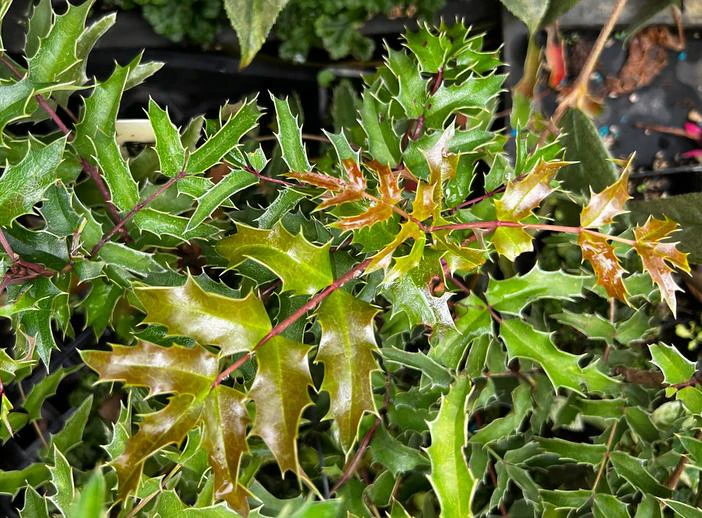Palo Amarillo
(Mahonia moranensis)
Palo Amarillo (Mahonia moranensis)
/
/

Megan Hansen
CC BY-SA 2.0
Image By:
Megan Hansen
Recorded By:
Copyright:
CC BY-SA 2.0
Copyright Notice:
Photo by: Megan Hansen | License Type: CC BY-SA 2.0 | License URL: https://creativecommons.org/licenses/by-sa/2.0/ | Uploader: MeganEHansen | Publisher: Flickr










Estimated Native Range
Climate Requirements for Chiba, Japan
| This Plant | Your Site | Plant Suitability for Your Location | ||
|---|---|---|---|---|
| • Precipitation | 10" - 124" | 54" | Aquatic | Aquatic |
| • High Temp. | 61°F - 98°F | 86°F | Your summer temperatures are normal for this plant. | Excellent |
| • Low Temp. | 23°F - 64°F | 33°F | Your winter temperatures are normal for this plant | Excellent |
This plant may not grow well at your location - your precipitation is too high.
Summary
Mahonia moranensis, commonly known as Palo Amarillo, is an evergreen shrub native to the understory of pine-oak forests in Mexico. It typically grows to a height of 4-6 feet (1.2-1.8 meters) and a width of 2-3 feet (0.6-0.9 meters), with a dense, upright habit. The plant features pinnate leaves with spiny leaflets that resemble holly, and its foliage can add textural interest to garden settings. The bright yellow flowers appear in dense clusters in late fall to winter and are quite showy, attracting pollinators. Following the flowering period, the shrub produces blue-black berries that are attractive to birds.
Palo Amarillo is valued for its year-round interest, provided by its evergreen foliage, winter blossoms, and subsequent berries. It is suitable for use in shaded borders, woodland gardens, and as an understory plant in larger landscapes. This shrub is adaptable to a range of light conditions from full sun to full shade and prefers well-drained soils. While it tolerates medium drainage, it thrives in moist, humus-rich soils. It is relatively low-maintenance but may require protection from intense afternoon sun in hotter climates. There are no major disease or pest issues, but it can be susceptible to root rot if overwatered or planted in poorly drained soils.CC BY-SA 4.0
Palo Amarillo is valued for its year-round interest, provided by its evergreen foliage, winter blossoms, and subsequent berries. It is suitable for use in shaded borders, woodland gardens, and as an understory plant in larger landscapes. This shrub is adaptable to a range of light conditions from full sun to full shade and prefers well-drained soils. While it tolerates medium drainage, it thrives in moist, humus-rich soils. It is relatively low-maintenance but may require protection from intense afternoon sun in hotter climates. There are no major disease or pest issues, but it can be susceptible to root rot if overwatered or planted in poorly drained soils.CC BY-SA 4.0
Plant Description
- Plant Type: Shrub
- Height: 4-6 feet
- Width: 1.5-3 feet
- Growth Rate: Moderate
- Flower Color: Yellow
- Flowering Season: Fall, Winter
- Leaf Retention: Evergreen
Growth Requirements
- Sun: Full Sun, Part Shade, Full Shade
- Water: Medium, High
- Drainage: Medium
Common Uses
Bank Stabilization, Bee Garden, Bird Garden, Butterfly Garden, Deer Resistant, Drought Tolerant, Fragrant, Hummingbird Garden, Low Maintenance, Rabbit Resistant, Salt Tolerant
Natural Habitat
Understory of pine-oak forests in Mexico
Other Names
Common Names: Wavyleaf Barberry
Scientific Names: Mahonia moranensis, Berberis moranensis, Mahonia pinnata var. cachira, Berberis pinnata var. hortensis, Mahonia moranensis var. cachira, Mahonia pinnata subsp. hortensis, Mahonia pinnata var. hortensis
GBIF Accepted Name: Mahonia moranensis (Schult. & Schult.fil.) I.M.Johnst.